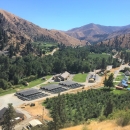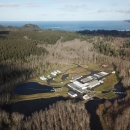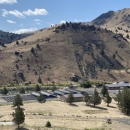
Abernathy Fish Technology Center Satellite Office
585 Shepherd Way, Suite 1
Helena, MT 59601
United States
About Doug Peterson
Doug is the program lead for the Quantitative Ecology & Technology Program. He conducts ecological research and analyses to support the conservation and management of aquatic species. Doug has focused on the ecology and conservation of stream salmonids for much of his FWS career. His recent research activities include developing decision support models for fishery management, modeling effects of climate change climate change
Climate change includes both global warming driven by human-induced emissions of greenhouse gases and the resulting large-scale shifts in weather patterns. Though there have been previous periods of climatic change, since the mid-20th century humans have had an unprecedented impact on Earth's climate system and caused change on a global scale.
Learn more about climate change on wild and hatchery fish populations, novel methods for biological control of invasive fishes, and understanding how isolated fish populations respond to removal of passage barriers.
PROFESSIONAL BACKGROUND
Ph.D. 2002. Fishery Biology. Colorado State University, Fort Collins, CO.
M.S. 1998. Fishery Biology. University of Washington, Seattle, WA.
B.A, 1992. Biology. Whitman College, Walla Walla, WA.
SELECTED PUBLICATIONS
Hanson, K.C., and D.P. Peterson. 2014. Modeling the potential impacts of climate change on Pacific salmon culture programs: an example at Winthrop National Fish Hatchery. Environmental Management 54(3): 433-448.
Peterson, D.P., B.E. Rieman, D.L. Horan, and M.K. Young. 2014. Patch size but not short-term isolation influences occurrence of westslope cutthroat trout above human-made barriers. Ecology of Freshwater Fish 23(4): 556-571.
Peterson, D.P., S.J. Wenger, B.E. Rieman, and D. Isaak. 2013. Linking climate change and fish conservation efforts using spatially explicit decision support tools. Fisheries 38(3): 112-127.
Peterson, D.P., K.D. Fausch, and G.C. White. 2004. Population ecology of an invasion: effects of brook trout on native cutthroat trout. Ecological Applications 14(3): 754-772.



